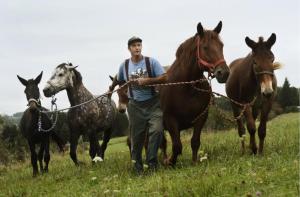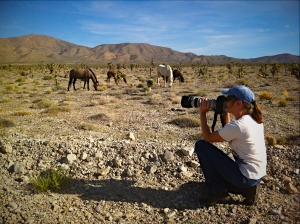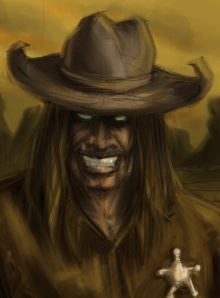Eye-Witness Report by Carol Walker ~ Director of Field Documentation for Wild Horse Freedom Federation
“The rider throws a loop and catches the foal, who bucks when he feels the rope then as it grows taut he is thrown to the ground…”
We are about 20 miles in from I80 on County Road 19 and about 1/2 mile from the trap which is on public land for a change. We can see the trap from here the back of it anyway but not the approach to it, that is on the other side of the ridge from us. They caught 105 horses here yesterday so just expect to get stragglers today. This area is so remote there is no cell service.
It is a beautiful day, we can see the mountains clearly, and we spotted a small band of horses just across the ridge, peacefully grazing , with no idea what fate awaits them. One helicopter flew over starting the search for horses.
Soon I hear a helicopter in the distance, behind the ridge that hides the trap. He goes back and forth several times, leading me to believe that he is having trouble getting the group he is driving into the trap. Suddenly, a lone black stallion pops up over the hill. Apparently he escaped the group, and he runs over the hill ignoring the helicopter, in the direction of the small group we saw on the hill.
Then finally the helicopter pushes the group behind the hill into the trap – I see many horses running to the panels, and then being moved into the adjoining pen with lots of dust. I see some greys but mostly bay, black and chestnut, typical for horses from Great Divide Basin.
Meanwhile the other helicopter is following another group that cuts across the hill right in front of us. We see a beautiful grey stallion bringing up the rear, and one foal in the middle. They disappear over a ridge, going away from the trap. I am thinking we will most likely see them again, and we do a few minutes later and they have gained more horses behind them. They are in dramatic silhouette, lots of dust boiling up and two foals now. They head down the hill toward us but the helicopter stops them, heading them the long way around the ridge to the trap, out of sight.
About an hour later we see another group head up a ridge with a sorrel stallion in front and a white mare moving more slowly than the rest of the group. Then we suddenly see a sorrel foal all by itself, come over the hill pursued by the helicopter. At first he is running, but slows to a trot then a walk, and seems bewildered. He stops and I notice that a rider is heading down the hill toward him. When he sees the horse and rider he starts running toward them. Clearly he wants to be with another horse and not stay all alone! The rider throws a loop and catches the foal, who bucks when he feels the rope then as it grows taut he is thrown to the ground, he gets up and goes along with the horse and rider very quietly all the way to the trap.
We are told that the roundup is over for the day, and they are loading the captured horses onto 3 small trailers and one large one and as the trailers drive down the road I see their faces in the trailer – they have no idea what awaits them at the end of their journey.














